Take the Lead: How to Leverage Tradeshow Prospects
The number-one priority of nearly every tradeshow exhibitor is to leave that event with a high number of qualified leads that with proper follow-up can be converted into future customers. Leads replenish the sales pipeline, bring in new customers, and generate sales revenue. Efforts to do this must start by developing a strategy for gathering and qualifying leads in the early planning stages for an event.
Assess an attendee’s interest in addition to obtaining relevant information
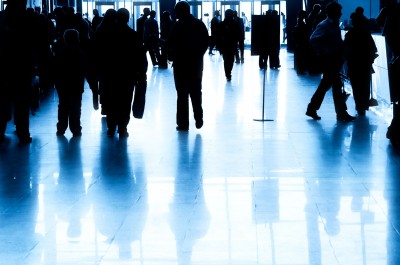 Representatives of your company who will be working in your booth need to know in advance what information they need to gather from each attendee to determine whether that person has the potential to buy your product or service. In order to determine that, the booth personnel need to assess an attendee’s interest in addition to obtaining other relevant information on their specific needs, budget requirements, and timing for a potential purchase.
Representatives of your company who will be working in your booth need to know in advance what information they need to gather from each attendee to determine whether that person has the potential to buy your product or service. In order to determine that, the booth personnel need to assess an attendee’s interest in addition to obtaining other relevant information on their specific needs, budget requirements, and timing for a potential purchase.
Select an automated tracking system
Automated tracking systems can also facilitate the process of capturing prospects’ contact information, though they might lack the personal contact that conveys that your company is truly interested in their needs and how it might be able to help them meet those needs. Automated tracking systems can be rented and work by electronically capturing data by having booth visitors swipe their badges as they enter the booth.
These systems vary, so do your research. Be sure the system’s output provides all the data you require for post-show marketing initiatives. Educate yourself on which equipment and software will best achieve your objectives. If automated systems can’t provide all the information you need, you might be better off opting for manual means of tracking tradeshow leads.
Know as much as possible about each sales prospect
More is better when it comes to information about potential leads. By knowing as much as possible about a sales prospect, you can devise a more effective follow-up strategy that more closely aligned with the specific needs of each person. In addition, detailed information enables you to evaluate the potential of each lead so you can prioritize your efforts. With detailed lead information, you can fine-tune your post-show marketing efforts and focus on the prospects you can most likely to convert to future customers.
Follow-up after the show is also critically important. Be sure and have booth personnel make note of how each prospect would prefer to be contacted by a company representative. After the show, contact prospects by phone, mail, or email. Be sure and follow up—either by a personal call or written contact—within a week of the show. After the show, track leads to determine each show’s effectiveness and expand efforts in shows with the best return on investment (ROI).
Determine Trade Show Value with the 2 Minute Challenge
As tradeshow exhibit professionals, we are constantly faced with justifying the value of participating in shows. The cost of exhibiting, the travel, diminishing show attendance, and the economy have turned up the heat.
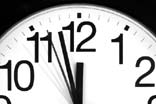 One basic test that helps me answer these challenges is to pose a simple question to any bottom line accountable executive. The question: if you were given 2 minutes to explain the advantages of dealing with your company to a person who regularly buys the same products and services from a competitor, do you think that you could convince them to give your company a try?
One basic test that helps me answer these challenges is to pose a simple question to any bottom line accountable executive. The question: if you were given 2 minutes to explain the advantages of dealing with your company to a person who regularly buys the same products and services from a competitor, do you think that you could convince them to give your company a try?
If the answer to this question is no, perhaps they should consider working for the competitor or at least reexamining your product or service offering.
Most confident executives would gladly accept this challenge. The best place to set the stage for this scenario is at a tradeshow or convention. Couple this amazing opportunity with the fact that the buyer has paid their own way to the show and that they are receptive to this pitch in the show environment and you can easily see the value proposition that tradeshows create.
The clients that I have worked with over the years that have the most success at shows have enlisted the help of a tradeshow pro to put together an integrated tradeshow marketing plan that will result in producing the maximum number of these opportunities. Our exhibit management program focuses on producing successful shows with minimum stress and maximum value. Our on-site trade show specialists are there the entire time, from set-up to tear-down – Let’s Talk.
Improve Your Trade Show ROI with Hospitality Suites
Ever considered a Hospitality Suite to improve your trade show results?
Many successful exhibitors use hospitality suites to provide additional sales opportunities at shows. This is normally a meeting room or suite in the headquarters hotel or a hotel attached to or near the convention center. The room is set up with comfortable furniture, televisions and is catered providing snacks and beverages of all types. There are often displays set up that provide promotional opportunities for the exhibitor’s new products or services.
 The room provides a place to meet before, during or after show hours with important clients or prospects and encourages longer meetings and conversations. An invitation to a hospitality suite is a good way to keep from spending precious prospecting time in the booth talking to customers. The suite can also provide a good place for the entire booth staff team to get together and discuss strategies. This private room is a much better place to conduct important meetings than the booth, a restaurant or bar.
The room provides a place to meet before, during or after show hours with important clients or prospects and encourages longer meetings and conversations. An invitation to a hospitality suite is a good way to keep from spending precious prospecting time in the booth talking to customers. The suite can also provide a good place for the entire booth staff team to get together and discuss strategies. This private room is a much better place to conduct important meetings than the booth, a restaurant or bar.
Customers and prospects feel like they are being treated as VIP’s when they are invited to the suite.
The challenge is to get attendees to take a portion of their limited time at the show and spend it in your suite. The suite usually works very well for customers but prospects are less likely to take you up on your invitation.
Suites can be rather expensive but if used properly can be an effective tool in getting the maximum results from each show.
Our on-site tradeshow specialists can maximize your trade show results.
Who Makes the Best Trade Show Booth Staff?
What to Consider When Determining the Best Staff for your Trade Show Booth
It may not always be the best idea to have your top salespeople staff your tradeshow display. There are several reasons to consider others to staff your booth.
- Most salespeople are born and bred to “close sales” and very few sales can actually be closed at a trade show.
- Salespeople will most likely have a number of current customers at the show. Tradeshow marketing objectives are, for the most part, based on gathering leads. It may be better to allow your sales staff the freedom to spend time with their customers and use others to staff your booth.
- Salespeople are typically very hard to manage. A well trained, disciplined approach to booth staffing may produce better results.
 So if not salespeople, then who does make the best booth staff? There is no one correct answer to this question. I believe that each company needs to look at the goals and objectives that they have established for each show and staff accordingly. Each tradeshow exhibit, large or small, should have a preplanned basic procedure for handling visitors that is designed to properly communicate your chosen message, answer any questions and record lead information for follow-up.
So if not salespeople, then who does make the best booth staff? There is no one correct answer to this question. I believe that each company needs to look at the goals and objectives that they have established for each show and staff accordingly. Each tradeshow exhibit, large or small, should have a preplanned basic procedure for handling visitors that is designed to properly communicate your chosen message, answer any questions and record lead information for follow-up.
There should be people assigned to greeting and qualifying visitors to the booth. This role should be filled by a person who is approachable, pleasant, smiling, energetic and a good communicator. Choose people to fill this role very carefully, as they will make that first and lasting impression on your prospects. Once a prospect has been qualified, this person should also be capable of delivering a brief presentation on your company.
As conversation with the prospect continues into more depth, there must also be someone in the booth that is very product or service knowledgeable. This could be a technical person, manager, or inside sales representative. Ideally, with the help of your staff, the prospect gets the information they need and leaves your booth with a positive impression of your company.
Think about your goals for the show and make sure to select and send the staff that gives you the best shot at not only meeting your goals, but exceeding them.
Trade Show Success Strategy: Pre-Show Promotion
About 75% of show attendees plan booth visits before the show starts. Surprisingly, research studies have also found that most exhibitors do not do any pre-show promotion. If you want to have a really successful show, you need to be part of their pre-show plans.
 Pre-show promotion is inexpensive and often can just be an investment of staff time. Here is an example of how one trade show pro promoted his business before the show.
Pre-show promotion is inexpensive and often can just be an investment of staff time. Here is an example of how one trade show pro promoted his business before the show.
The VP of Sales for a furniture manufacturer stays ahead of his competition by having his sales team call every customer and key prospect before their most important annual show. They do not use the Trade Show attendee list; they call their entire target customer list. The sales team uses the upcoming show as a reason to call all of their target customers. The call is an invitation to a company-sponsored breakfast reception which has become an annual event at the show. When they learn that someone plans to attend the show, they take the opportunity to make sure they have the target customer’s current cell phone number so they can reach them during the show. They follow-up with two personalized e-mails to people who have said they will attend. Target customers, who are not attending the show, also receive two e-mails plus are sent a “breakfast in a box” gift along with information about the season’s new line of furniture and show specials.
The company uses a similar strategy for every trade show they attend: A phone call and follow-up emails to attendees and target prospects who are not able to attend the show.
It’s a simple plan. It’s easily executed by the sales team. They are careful not inundate their prospects and customers with lots of unwanted emails and promotional materials.
This well-orchestrated pre-show promotion has significantly increased the number of qualified leads generated from the show and has resulted in improving the ROI on the company’s tradeshow budget.
How can you put together a pre-show promotion that is successful?
- If you do not have a target customer list to contact, make sure to get the list of show attendees as soon as you can from the show staff. If you can get additional information about attendees that will be useful in quickly identifying prospects, make sure that it is included.
- Structure your pre-promotion campaign to start to build a relationship with your target customers before the show.
- Make sure that all materials and communication are professional and consistent with your company’s brand image. Design everything so that it is consistent with the graphic experience that your company will present at the show.
- Explore options for cost-effective pre-show communications in planned trade show mailings or emails.
- For major shows that have high traffic websites, think about online banner advertising. But be cautious about investing much of your budget in banner ads.
- Include a call to action that involves a commitment to meet during the show or to visit your booth at a set time.
Pre-show promotion takes some time and effort. It will increase your workload. But it will increase the number of qualified leads and sales that you get from the show. It gives you the opportunity to pre-sell your business. And it helps you focus your time and effort of the most important prospect versus anyone who wanders by your booth.
Do you have a pre-show promotion program? Have you found pre-show promotion is worth your investment?
The Other Reasons to Exhibit at Trade Shows
Almost everything that is written regarding the justification for exhibiting at tradeshows, talks about marketing, lead generation, and sales. These are important benefits, to be sure, but here are several other very good reasons for companies to participate in shows and to make sure that they compare favorably to their competitors. For example:
 The Investment Community – Companies of all sizes, public or private, need to consider that many investment analysts attend trade shows. Where better to gauge a company’s market position relative to their industry, than at a show? Financial statements are not the only consideration when deciding on investments. Savvy institutional investors often walk the aisles of shows to better understand current positions and future potential.
The Investment Community – Companies of all sizes, public or private, need to consider that many investment analysts attend trade shows. Where better to gauge a company’s market position relative to their industry, than at a show? Financial statements are not the only consideration when deciding on investments. Savvy institutional investors often walk the aisles of shows to better understand current positions and future potential.
The Press – We have all seen shows like 60 minutes touring the Consumer Electronics Show or the Housewares Show, but these are not the only times that the press is present at shows. In every industry, people want to see what’s new. In addition, the information that is published will be posted on the internet, allowing global exposure. Favorable press coverage can really help your marketing efforts.
Recruiting – When a company comes to a show with a new or larger exhibit, prospective salespeople or managers see a financially strong, growing company, and are much more likely to consider becoming part of the team.
Market Research – When a prospect comes to your booth, why not do some market research? The key here is to formalize the information gathered by using a lead card. Asking a question like, “What would you think if we added an automatic feeder to our production system?” could provide valuable information for future product development.
While none of these reasons are going to justify the investment of exhibiting at a trade show on their own, they all add to the overall ROI. As such, be sure to consider ALL of the potential benefits when discussing the merits of exhibiting at a show.
Replacing Trade Show Giveaways With Promotions – Selecting a Great Premium
You have designed the perfect promotion and it requires a giveaway. How do you select a premium that builds on the promotional message, has high-perceived value among your target prospects, and is consistent with your brand position?
Set Your Budget
The first questions you need to ask are, “How much can I spend to reach a new prospect or make a sale?” and “How many premiums do I need?” The price range for trade show giveaway items is enormous. Timing, quality, order quantity, and special orders all affect the price. Since you will save a lot of money per unit with a larger order, try to find an item you can use for a number of shows.
Do a Brainstorming Search
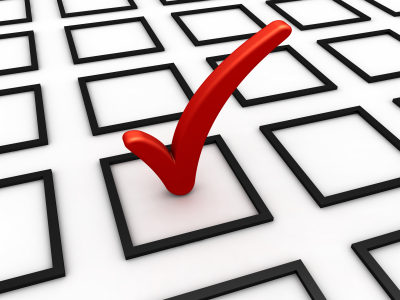 Once you have a budget, limit your search to items that fit within your budget. Look for items that extend the promotional message and support your brand. Look for items that are relevant to your target and related conceptually to your business.
Once you have a budget, limit your search to items that fit within your budget. Look for items that extend the promotional message and support your brand. Look for items that are relevant to your target and related conceptually to your business.
Look beyond premium websites – pick up the phone and call a couple advertising specialty firms. Describe your promotion and give your budget requirements to a sales rep. Let them get back to you with some promotional item recommendations.
Use your favorite online search engine and search for items that are related to your promotional theme. Almost any item can be labeled, imprinted or packaged with your logo. Don’t restrict where you look for ideas.
Ask coworkers for ideas.
Here are a few idea starters:
- Your goal is to select an item that is useful and has real value to your prospect.
- High impact, low-cost premiums are informational items related to your product – article reprints, special reports, free audio or video download codes that can be redeemed on your website, or computer software. Other more expensive informational premiums include industry-specific DVDs and books.
- If an informational premium isn’t suited to your business and target customers, consider a specialized tool, something that will make your prospect’s job or life easier.
- Seasonal items have high impact at the beginning of the season – summer items are great ideas in May and June, but far less effective in August.
- Tote bags – everyone at the show will be on the lookout for a really great tote bag. Avoid the economy or value tote bags – they will be passed by or discarded when attendees are offered quality bags. This is a nice addition to an informational premium.
- Inexpensive items can be appealing if they are high quality and useful. For example, a tin of quality, mini breath mints is a popular item at B2B shows.
- Items that incorporate new technology are popular everywhere. For example, LED flashlights are a highly valued item.
Put together a list of candidates
First, put together a list of all the possibilities then cross off the following items:
- Eliminate low quality items. It is better to skip the free gift than to give a valuable prospect a pen with your logo on it that doesn’t work or leaks all over their hand.
- Avoid generic premiums that have nothing to do with your business except your logo: sports water bottles, pocket office kits, picture frames, etc.
- Give away items that people can not easily transport home. If most attendees fly into the show, avoid large items like golf umbrellas or breakable items.
- Forget about heavy and bulky items unless you plan to deliver them to your prospects’ offices later. Just think about carrying this item around the showroom floor for hours then bringing it home on the plane.
Selecting the item
Now comes the fun part – picking the item. Look over your list and see if a few items really support the promotional theme and desired brand position. Pick the top 3 to 5 items.
Review the finalists with your sales team and a few of your customers to see if there is a consensus pick. If you have a tie, select the least expensive item.
The finishing touch
Make sure to incorporate your message on the item. Have it imprinted, labeled or packaged with your company logo, name and contact information. Don’t let there be any doubt where it came from.
Everything in your exhibit has to work to build your brand and acquire new business. A trade show premium is no exception. If it isn’t winning you new customers, take the money and put it to good use closing sales.
Replacing Trade Show Giveaways With Promotions That Work
For decades companies were satisfied to give away trade show premiums that built brand awareness and didn’t do much more. Company logos appeared on everything from camouflaged jackets to rubber ducks. Most ended up discarded or given away to friends and family. Now marketers are reexamining their strategies and replacing free gifts with promotions.
A promotion is an incentive to act – it is something that will directly generate qualified leads and drive sales.
Building a successful promotion
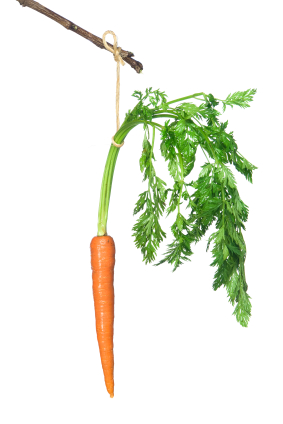 The first step is to define your target customer and decide what you are trying to accomplish. Every business wants to increase brand awareness but now marketers want promotions that also motivate an action. Do you want to get leads, get people to try your product, make sales at a show, drive people to your website, or generate retail traffic?
The first step is to define your target customer and decide what you are trying to accomplish. Every business wants to increase brand awareness but now marketers want promotions that also motivate an action. Do you want to get leads, get people to try your product, make sales at a show, drive people to your website, or generate retail traffic?
Once you have defined your goal, design a promotion to target your prospects. Don’t just give something to everyone who passes by your booth unless everyone is a great prospect. General giveaways generate unqualified leads and your real prospects will be hard to find in the mass of names gathered at the booth. Most sales reps won’t even bother to follow up on any of the show leads because it is too hard to find the qualified prospects.
Structure the promotion in a way that starts a dialog with target customers and encourages follow-up conversations or contacts.
Does your promotion require a free gift, a sales incentive or both?
Some promotions work best with a sales incentive – discount coupons, gift certificates for future purchases, gift with purchase or other sales promotion offer. Some companies have found that combining a sales incentive with a premium giveaway is their unbeatable combination. Make sure to get your prospects’ names, email addresses and phone numbers, and some additional information that identifies the best prospects. If you choose to use a giveaway, capture the prospects’ names and contact information in exchange for these gifts. Also, take the opportunity to ask one or two questions that will make the qualified prospects stand out.
Games, Drawings and Prizes
Games and drawings are very popular and will engage people. The trick is to design a contest that will appeal mostly to qualified prospects. The easiest way to create a focused game or drawing is to select a prize that will mostly interest a qualified prospect. So never give away money or TV sets. Instead, think about giving away your product or a related item as a prize. Then increase participation in the contest by giving away lots of prizes throughout the show.
Track your results
Establish a way to measure the success of your trade show promotions. If you used a sales incentive, code it so that you know what the show offer actually generated. If you gave away a premium item, after the trade show, survey your customers and your exhibit team about how well it worked.
Work to answer these questions:
- Did the offer attract qualified prospects to the booth?
- Did the promotion achieve your sales and/or lead goal?
- Was it profitable?
- Did your prospect and customers find the premium and/or sales incentive useful? Or did they discard or forget it?
- Did the promotion, sales incentive and/or the premium project the right corporate image?
Selecting a great premium
There are plenty of exciting trade show giveaways that will make your promotion a success. Learn more about creating promotions that work in “Part 2 – Selecting a Great Premium”.
How To Make Tradeshow Booth Leads Truly Valuable
Why are sales leads collected at tradeshow exhibits viewed as having very little real value by management and the sales staff? Why are 75% of tradeshow leads never followed up? Since most sales organizations are composed of aggressive, proactive, money motivated, commissioned sales people, it just doesn’t seem to make sense.
Gathering Sales Leads With Value at your Tradeshow
 So, what is the biggest problem with tradeshow leads? In my experience: Tradeshow leads are difficult to follow up effectively.
So, what is the biggest problem with tradeshow leads? In my experience: Tradeshow leads are difficult to follow up effectively.
If you consider the impersonal nature of taking leads at a show, it only makes sense. Attendees are given a magnetic striped card that is scanned when they come to the tradeshow display. This automatically provides an exhibitor with basic information about the prospect – name, title, company, address, email, phone etc. Most lead retrieval units also provide an opportunity to categorize the lead – “hot lead, contact immediately” or “send information only.” While this is an efficient means of collecting information at a tradeshow booth, it provides very little information to the salesperson who contacts the prospect after the show.
Your Leads are Human, not Barcodes – Custom Design your Tradeshow Lead Card
A much better way to assure effective follow-up is to design a lead card that asks a few targeted questions that will be important in post-tradeshow follow-up. When defining lead card questions, the best source of information is the people who will responsible for following up. Some ideas to consider:
- What products are you most interested in?
- Who are you currently purchasing this product from?
- What problems do you have with your current supplier?
- What could we do to earn your business?
Other helpful tips to keep in mind:
- Keep the tradeshow lead card as short as possible and consider providing the prospects with a premium item as a reward for taking time to answer your questions.
- Always swipe the attendee’s badge so that you have their basic information for follow-up.
- Energize your booth staff by offering a prize to the person who collects the most completed lead cards each day.
Try this at your next tradeshow booth and you will notice an immediate increase in results.
Need help with your trade show strategy? Let’s talk.
DOs and DON’Ts for Effective Trade Show Booths
So in the past few weeks we’ve talked about a myriad of trade show topics: how to entertain attendees, how to develop an effective trade show marketing strategy, tips on how to work your booth, how to reduce costs, and ways to plan before leaving for your trade show. Let’s take a few steps back and determine what are a few of the DOs and DON’Ts of pulling together a successful, enticing tradeshow exhibit.
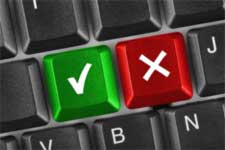 Preparing for a trade show, especially for small companies, can be a daunting task. Deciding what to include and how to set up an actual exhibit/display is one of the fundamental decisions you’ll have to make. First step is to contact the show managers and find out the size of the booth you will have, whether there is a wall space for your company sign, if there are electrical outlets available, and any other small items that you might be responsible for supplying.
Preparing for a trade show, especially for small companies, can be a daunting task. Deciding what to include and how to set up an actual exhibit/display is one of the fundamental decisions you’ll have to make. First step is to contact the show managers and find out the size of the booth you will have, whether there is a wall space for your company sign, if there are electrical outlets available, and any other small items that you might be responsible for supplying.
Here are a few other tips to keep in mind when creating your exhibit:
DON’T overstuff it. Product managers might want to display things that represent every brand or product your company offers. Partners might want their logo splashed all over your booth. Keep in mind that sometimes simpler is better. Booths overcrowded with displays, products, stands, etc., turn off prospective attendees and prevent you from quickly communicating why attendees should visit you.
DO simplify your message. Many exhibitors make the mistake of bombarding their booth visitors with marketing slogans. Instead choose the one core message you want to impart to potential customers and stick to that in terms of graphic presentations. Displaying fewer, but larger visual elements in your exhibit will reduce clutter and better garner an attendee’s attention and create a lasting impression.
DO focus on the cream of the crop. Instead of hauling your entire product line to a tradeshow booth and again cluttering your display, overwhelming visitors, and diluting your marketing message, showcase only your new and top-selling products.
DON’T rely on static displays. Any type of motion captures people’s attention as opposed to static displays. You can take advantage of this by playing a looping DVD on a widescreen TV or make use of a rotating display.
DO maintain a small, private area. If your booth is big enough, it’s nice to have a quiet, private area with a table and a few chairs to take attendees or promising prospects that might like to sit down and discuss your company and its product and services in more detail.
DON’T scrimp on carpet. This might sound silly, but after a long day of walking miles and miles on the unforgiving floors of huge exhibit halls, visitors will appreciate booths that have plush, padded carpet. And, so will your booth workers.
Archives
- July 2021
- June 2021
- May 2021
- April 2021
- October 2018
- September 2018
- August 2018
- July 2018
- June 2018
- May 2018
- April 2018
- March 2018
- February 2018
- January 2018
- December 2017
- November 2017
- October 2017
- September 2017
- August 2017
- July 2017
- June 2017
- May 2017
- April 2017
- March 2017
- February 2017
- January 2017
- December 2016
- November 2016
- October 2016
- September 2016
- August 2016
- July 2016
- June 2016
- May 2016
- April 2016
- March 2016
